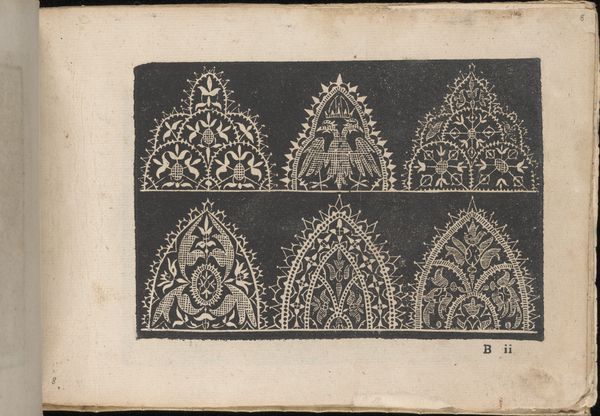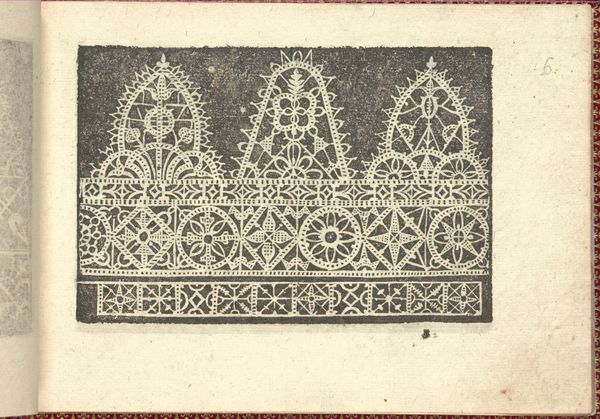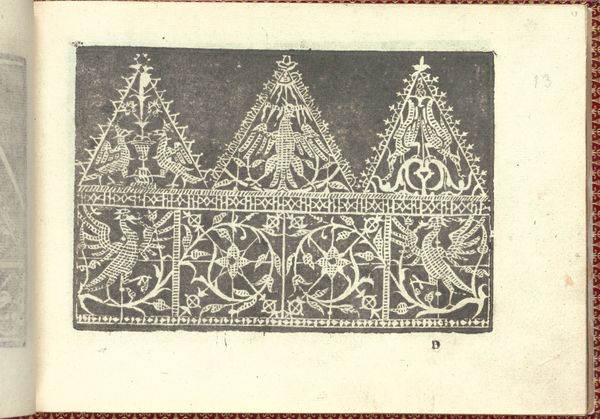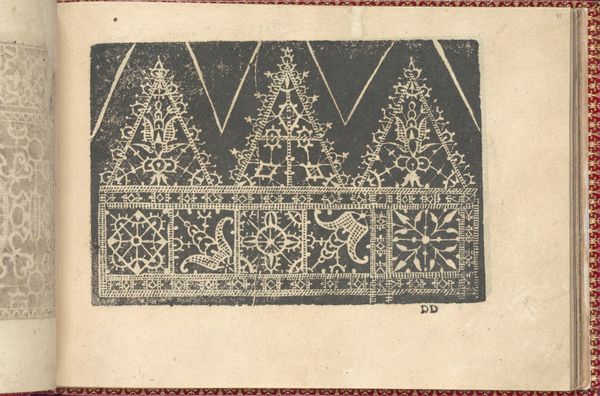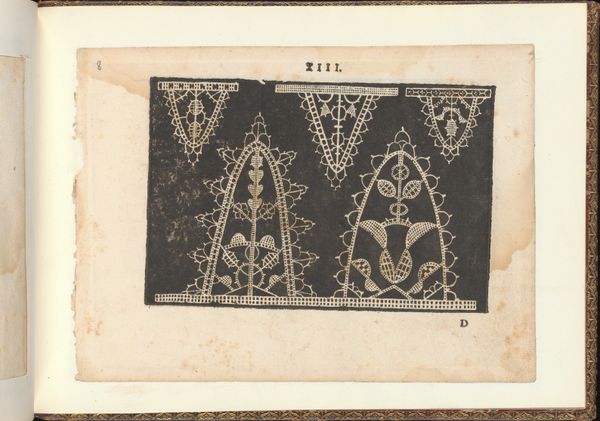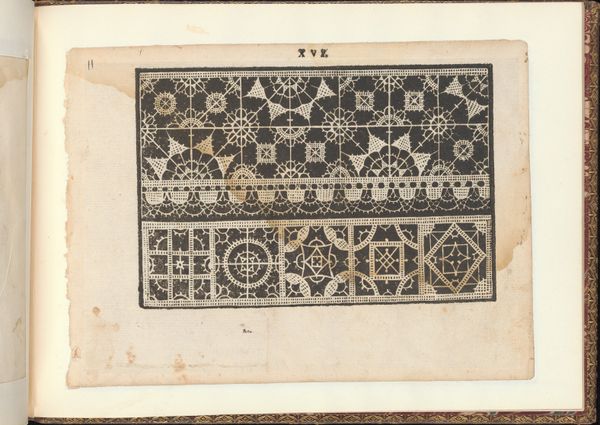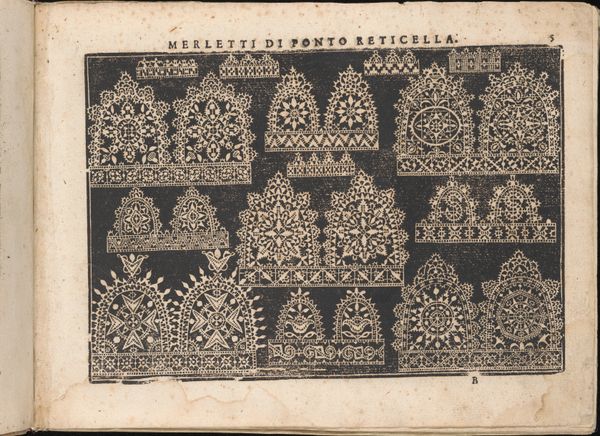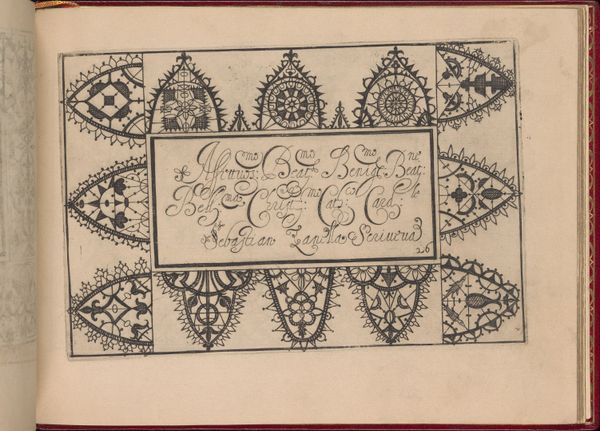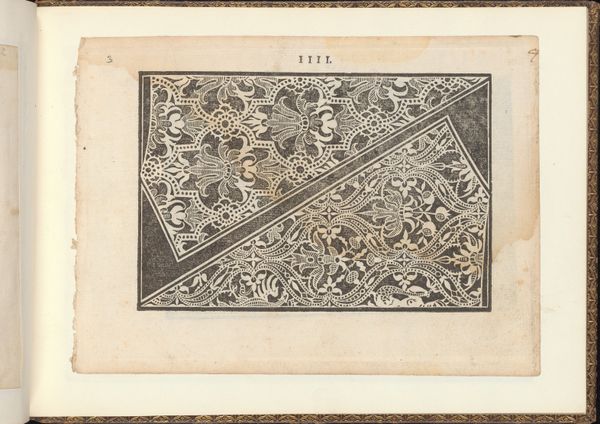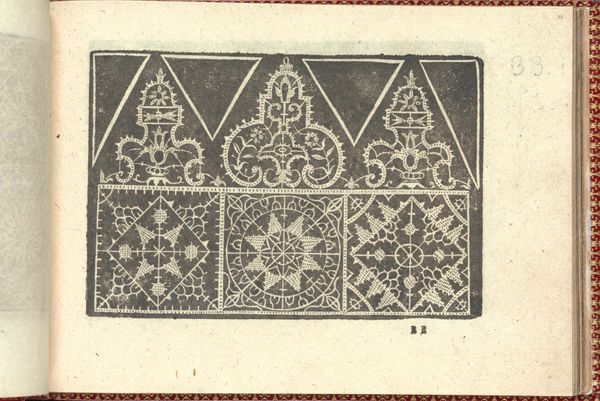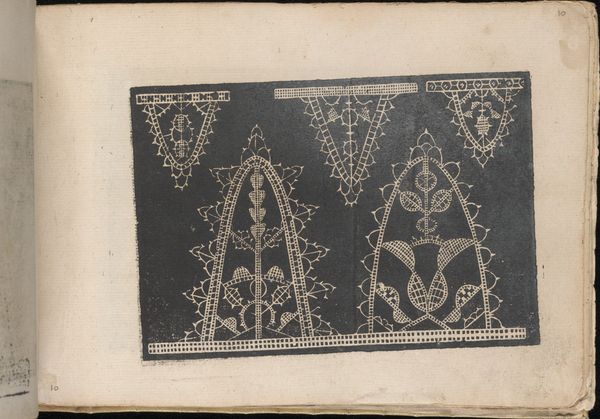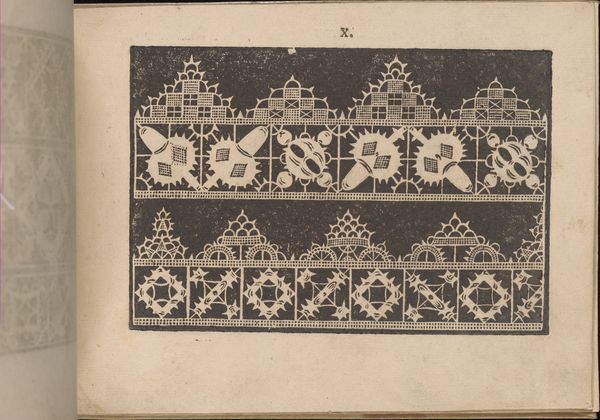
drawing, graphic-art, ornament, print, paper, woodcut
#
drawing
#
graphic-art
#
ornament
# print
#
book
#
paper
#
woodcut
#
northern-renaissance
Dimensions: Overall: 6 11/16 x 9 1/16 in. (17 x 23 cm)
Copyright: Public Domain
Editor: This is a page from "Prima parte de' fiori," printed in 1591, showcasing a series of floral and geometric designs in a woodcut print. I’m immediately struck by the intricate, almost lace-like quality of the patterns. How do you interpret this work, looking at the symbology embedded within it? Curator: The density and the repetition evoke cultural memory, a visual echo across generations. The black background serves to amplify the white ornamental figures and emphasizes that they are emerging from, or perhaps imposed upon, a darker context. Can you identify any specific symbols that stand out? Editor: I notice a repeating floral motif, and in the top center, a double-headed eagle. Are these common symbols for the period? Curator: Exactly! The floral designs often represented themes of nature, beauty, and even mortality in the Renaissance, fitting within established symbolic languages for the time. However, the double-headed eagle particularly strikes me. That potent figure signified imperial authority, but could you imagine what else it can reference? Editor: Well, an eagle with two heads gazing in opposite directions might be interpreted as all-seeing or representative of two powers united. Is it possible its inclusion meant more than simply aesthetic embellishment? Curator: Precisely. In art and culture the appearance of an authoritative signifier alongside more quotidian imagery could act as a visual guide. Through recognition and the building of associations and symbolic connections, this art helps structure collective memory, influencing individual interpretations and even emotional responses. Editor: So, the artwork goes beyond ornamentation, really providing a way for visual understanding. I’ve gained an amazing sense of not just design, but of how meaning and visual elements intertwined back then. Curator: It’s like looking at an elaborate family crest! It reveals both the enduring power of symbols and how artists harnessed cultural memory in the Renaissance.
Comments
No comments
Be the first to comment and join the conversation on the ultimate creative platform.
